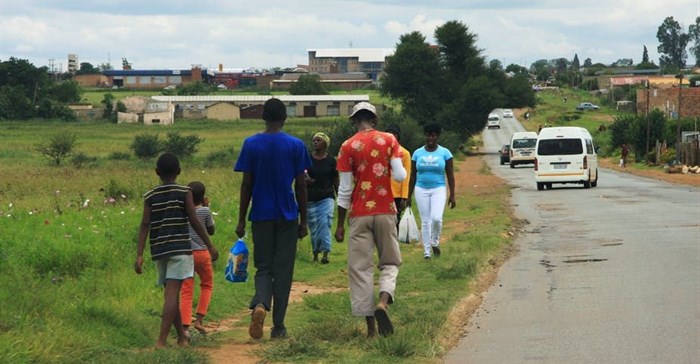
Top stories



Marketing & MediaCammy Msimango on finding her footing in South Africa’s fast-moving digital newsroom
Esther Tomorrow, MDNTV 1 day




The importance of streets as spaces for people is being recognised in a range of cities around the world. In Liuyun Xiaoqu, a suburb of the Chinese city Guangzhou, previously access controlled streets have been converted to wide thoroughfares that only pedestrians are allowed to use.
In Barcelona some streets have been turned into pedestrian boulevards. London has pushed parking further back from street edges. This limits the negative impact of cars (noise, danger and pollution) and leaves more room for pedestrians to move freely and safely to browse or shop.
Amid these global shifts and ongoing debate about the role of streets, the Gauteng City-Region Observatory wanted to explore the idea of streets as public spaces in South Africa’s economic capital. This is part of the work we do in partnership with provincial and local governments to provide data for policy making. So we commissioned a series of case studies; these were recently published in a research report, Taking streets seriously.
In the Gauteng province, as is the case across South Africa, the private car dominates road design. A number of by-laws limit activities not related to cars and other vehicles – whether that’s selling fruit from a makeshift stall, cutting people’s hair or just sitting, chatting or observing. Pavements tend to be narrow and street furniture, like benches, is rare.
Despite these restrictions, we found that some of Gauteng’s streets are inhabited and used as public spaces in multiple ways. This shows that people recognise streets as spaces of opportunity (both economically and socially). To grow these opportunities, local authorities need to pursue the direction of cities like Barcelona, London and Guangzhou by supporting pedestrian and non-motorised activities on streets.
This research is a rich resource for city designers because it provides local granular data and information about the region’s urban spaces.
Gauteng is home to about 14.3 million people. Many of its streets bustle with informal traders and their customers. Pedestrians can buy fruit and vegetables, mobile data or second-hand clothes and have their hair trimmed on the pavements. Some streets are full of children playing, dogs barking, grannies chatting and goats grazing.
Two different case studies featured in our report show how residents and users have taken both formal and informal approaches to inhabiting roads that were built as major arterial routes – for cars, not for people.
One is Moshoeshoe Street in Emfuleni in the south-west of Gauteng and the other is Solomon Mahlangu Drive in Mamelodi East. On Solomon Mahlangu Drive a thriving informal node has sprung up at a minibus taxi interchange. On Moshoeshoe Street the activities are less concentrated but all along its length residents and users are challenging the road’s designation as a regional arterial route by engaging in residential and trading activities on the roadside.
These streets have been transformed. They’ve become places of exchange, socially and economically.
But in some places, the shift towards “public space” has created tension. This is because people are trying to expand the functions or activities on streets and pavements by using the space to socialise, play soccer or sell sweets. Not everybody is happy about loud music or the arrival of informal traders in a neighbourhood or area; some complain about increased mess and even crime.
In one of our case studies, in De Villiers Street in Johannesburg’s CBD, informal traders have tried to address these perceptions by contributing to cleaning schemes and employing security guards. This has made the street safer and cleaner – and a more attractive public space.
By comparison, residents of an affluent suburb, Killarney, have responded with hostility to a minibus taxi stop and informal traders that serve pedestrians. Residents have erected high walls and fences and installed spikes on low surfaces.
It’s not just informal traders and businesses that unsettle people. One of our case studies focused on suburban high streets in wealthy areas. Restaurants and sidewalk cafes have become more common along the pavements of traditionally quiet retail strips. Some residents resent these activities because of increased traffic and noise levels and reduced pavement space.
But these activities actually bring new functionality to streets and encourage more pedestrian activity. This is good for increasing aspects of diversity in these areas. Varied activities and functions in compact spaces can reduce the need for transportation and improve the quality of our urban environments.
Gauteng residents are already creating better street spaces. The governance and design of these streets needs more public engagement. Local authorities simply need to follow the lead of inhabitants and users who have embraced streets as public spaces in multiple ways.
This article was originally published on The Conversation. Read the original article.

The Conversation Africa is an independent source of news and views from the academic and research community. Its aim is to promote better understanding of current affairs and complex issues, and allow for a better quality of public discourse and conversation.
Go to: https://theconversation.com/africa